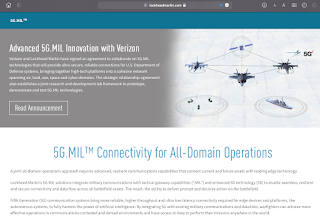by Charles Thompson, Vice President, Service Assurance, Spirent Communications
5G brings incredible opportunity for communication service providers (CSPs), enterprises, and the broader digital ecosystem. By 2022, there were already 700 million 5G subscriptions across more than 70 countries—an explosion of devices that can take advantage of 5G density and performance. Even more exciting, the industry is gearing up to unleash a new generation of enterprise use cases across manufacturing, healthcare, retail, and other verticals.
Operators and their customers are banking on new 5G capabilities like ultra-low latencies, native cloud/edge connectivity, and network slicing to fuel transformative new business models. Before that can happen, however, we need to be confident that CSPs can actually operate next-generation networks and services. And so far, that’s not a given.
5G introduces a radically different network than CSPs have worked with before, requiring new strategies for monitoring, troubleshooting, and other basic network operations. It’s tempting to focus on the amazing 5G possibilities. But for most CSPs, just assuring 5G networks and services remains a work in progress.
Navigating 5G Complexity
Why does 5G present so many challenges? Because it changes pretty much everything about telecom networks, from deployments to updates to the basic definition of “network infrastructure.” Most current operations strategies were designed for yesterday’s networks. They’re built to assure mostly hardware-based network functions from one or two vendors, and services with fixed, predictable traffic patterns. In a 5G world, however, the network mimics a living, breathing organism, composed of virtualized and disaggregated software running as a dynamic hybrid cloud.
It’s a huge change, and for CSP assurance teams, it brings:
- New technologies: 5G network functions are more flexible and adaptable, scaling in and out dynamically as conditions change. But for teams trying to monitor network services, this means service paths constantly change too—including traversing clouds and infrastructure segments outside the CSP’s control.
- Cloud software models: By running open, disaggregated network architectures, CSPs can work with new vendors and more quickly tap into new innovations. But these architectures also bring many more network layers and interfaces that assurance teams now have to observe. Additionally, instead of receiving software updates two to three times per year and implementing them in fixed maintenance windows, operators now receive continuous updates from many more vendors, each releasing on its own cadence.
- Cloud-centric architectures: The passive assurance tools used to monitor 4G networks assumed a more centralized topology, with the “network edge” located in a few large regional data centers. To enable new 5G use cases with ultra-low latencies and advanced edge intelligence, CSPs are embracing highly distributed architectures. Large operators might maintain 50 edge data centers—and potentially hundreds more “far edge” sites hosting network functions closer to customers. When monitoring is designed to observe a few fixed points in the network, that’s no longer enough.
- New security concerns: The traditional enterprise network perimeter has eroded, with most applications and users now operating outside the firewall. As a result, almost all data is now encrypted. How can operators measure end-user experience in an always-encrypted world?
If you’re wondering how current assurance strategies will adapt to this new reality, CSP operations teams are, too. Traditional approaches rely on passive monitoring infrastructures that collect real user data from live services. This type of monitoring can’t keep up with dynamic cloudified networks and service paths that continually change. Even if it could, it would still only detect problems after they’d affected customers. By then, the stringent service-level agreements (SLAs) on which operators are depending to monetize their 5G investments may already be violated.
Introducing Active Assurance
Traditional static probes may not scale with 5G networks, but another monitoring strategy seems tailor-made for them: active assurance. Active assurance agents function like a virtual device, injecting synthetic traffic into the network to measure performance from a user’s point of view. They can plug into any part of the network, running the same applications and emulating the same behavior as real users. And since they use the same authentication and trust framework, they provide a firsthand view of what real users experience.
Active assurance can continuously monitor the performance of complex 5G networks, applications, and services. By emulating real application traffic, CSPs can maintain SLAs for the most demanding 5G use cases. And unlike traditional monitoring, which only measures real user traffic, active assurance can address the full network lifecycle: validating new network functions and slices before activation, monitoring and troubleshooting live services, and re-validating after any change.
It adds up to an assurance strategy perfectly suited for 5G networks and services. CSPs can:
- Detect problems before users: Active assurance uses artificial intelligence and machine learning (AI/ML) to spot emerging issues in highly dynamic, distributed environments. Combined with automated activation testing and post-change validation, CSPs can spot many problems before they affect live services—essential for supporting more stringent SLAs.
- Scale with dynamic 5G networks: There’s no way to instrument static monitoring infrastructure for service paths that are constantly in flux, or that traverse third-party networks and clouds. But active agents work like any other endpoint, sending traffic through the network and observing how the network performs. As a result, they capture the end-to-end service experience—including those parts outside the operator’s control.
- Accelerate root cause analysis: Since active assurance follows the same path through the network as real users, it provides true end-to-end visibility. Supported by AI analysis tools, operations teams can quickly segment any problem, even when it originates in someone else’s network.
- Support encrypted traffic in motion: Traditional static monitoring must decrypt packets to analyze the service experience—limiting where it can be used and potentially increasing risk. Since active assurance uses the same security, following the same paths as real users, no decryption is needed.
- Automate testing: Active assurance plugs right into the automated, AI-enabled operational models that accompany modern cloud-native, software-driven networks. Service providers can automatically invoke active testing as part of Continuous Integration/Continuous Delivery (CI/CD) toolchains and change management procedures. And they can use automated triage test scripts to quickly isolate issues.
Looking Ahead
5G networks hold enormous potential for CSPs and their customers—provided we can overcome the daunting operational challenges that come with them. CSPs are still refining the monitoring strategies they’ll need to deliver on 5G’s potential. But with active assurance, they have a powerful toolset for assuring 5G services—and a clear roadmap to operationalize them.
 Under an exclusive ten-year partnership, Ericsson becomes the sole supplier of 4G and 5G radio access and microwave transport solutions. Deployed solutions will include Ericsson’s 4G and 5G antenna-integrated radios across nbn’s current and future spectrum bands, and the latest Massive MIMO solutions providing best-in-class performance and energy efficiency in a lightweight small footprint form factor.
Under an exclusive ten-year partnership, Ericsson becomes the sole supplier of 4G and 5G radio access and microwave transport solutions. Deployed solutions will include Ericsson’s 4G and 5G antenna-integrated radios across nbn’s current and future spectrum bands, and the latest Massive MIMO solutions providing best-in-class performance and energy efficiency in a lightweight small footprint form factor.





































